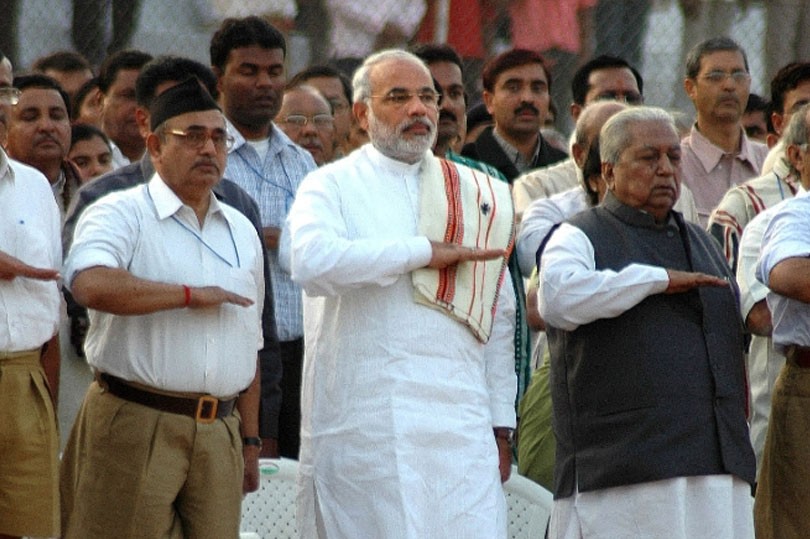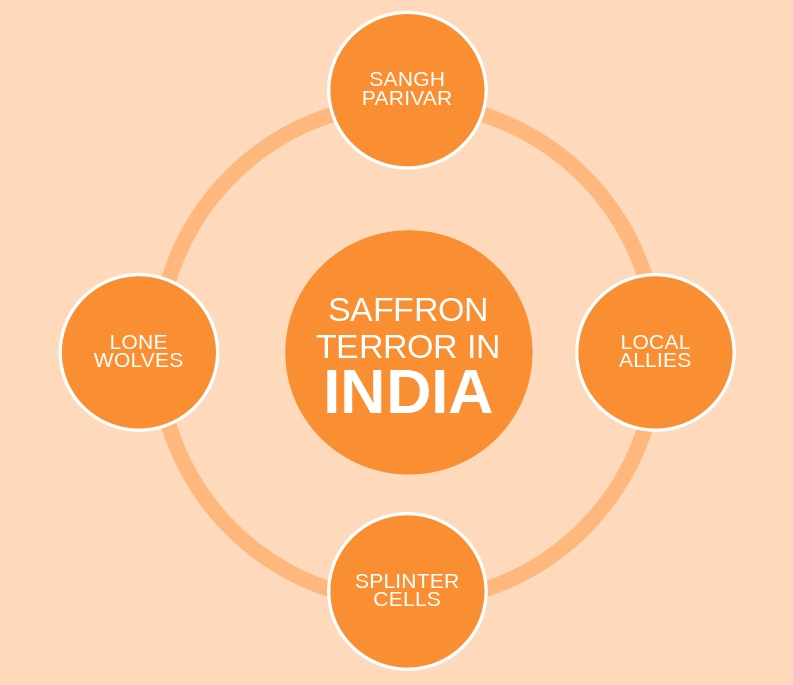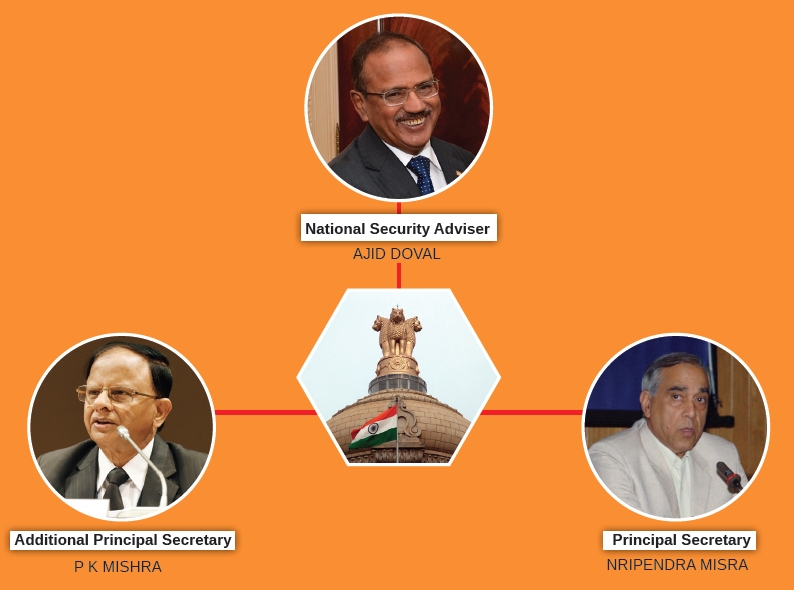Famed Kannada scholar MM Kalburgi was shot dead at his home in Dharwad on the morning of 30th August, 2015 by two assailants on a motorcycle. The identity of the assailants the motives behind the murder are unknown at this point. Kalburgi was in hot waters with Hindutva activists hunting him for hurting “Hindu sentiments” and a former head of Sri Ram Sena, a fringe group notorious for moral policing, was taken into custody by the Mangalore police after posting a tweet celebrating the murder.
Kalburgi is one of a long line of activists murdered due to their opposition to certain religious practices prevalent in India. Another noteworthy news item is the bail of Swami Aseemanand, the main accused in a string of bomb blasts including the Samjhauta Express Train bombing. In the Kerala state of India, the socialist CPI(M) and the ruling BJP party who are considered religious rightwing have been engaged in a state of armed conflict with hundreds of workers on both sides being killed. In other parts of India, minorities, primarily the Muslims, have been on the receiving end of various discriminatory practices like ban on beef consumption and cow slaughter as well as facing violence.
Many have started to point towards this worrying trend and asserted it to be a part of the rise of saffron terror or Militant Hindutva. Saffron terrorism is the use of violence or threat of violence, inspired by Hindutva, which is the predominant form of Hindu nationalism in India as well as Nepal. A proper overview of Saffron Terror groups is required, in order to analyze the threats of Saffron terrorism.
The Ideology of Hindutva
Hindutva, or “Hinduness”, a term coined by Vinayak Damodar Savarkar, in 1923, is the main driving force behind Saffron terror in India and Nepal. According to the Oxford English Dictionary, Hindutva is an ideology seeking to establish the hegemony of Hindus and the Hindu way of life, and according to the Encyclopedia Britannica, “Hindutva (or Hinduness) is an ideology that seeks to define Indian culture in terms of Hindu values”. Hindutva revolves around the following principles:
- The entire Indo-Pak subcontinent, (which includes countries ranging from Afghanistan to Indonesia), is the homeland of the Hindus.
- “Hindus” are those who believe India is their fatherland (pitribhumi) and holyland (punyabhumi)
- Emphasizing historical “oppression” of Hindus by other groups like the Muslims and the Christians and aiming to “reverse” the influence resulting from these intrusions.
- Opposing British colonialism (though RSS actively collaborated with the British against other liberation movements and remained aloof from the freedom struggle)
- Opposing communism because it caused weakness of unity among Hindus.
- A call to form a “Hindu nation” (Hindu rashtra)
- Cow slaughter in India should be banned.
- Sanskrit should be taught compulsorily to all students
- Most modern scientific discoveries were known and described in the Vedas
Hindutva is advocated to have been established in Nagpur, Maharashtra through the formation of the Rashtriya Swayamsevak Sangh or RSS (National Volunteer Organization or National Patriotic Organization). Hindutva is considered by many scholars, including Dr Ram Punyani, as a reaction of High caste Hindus against the lower caste Dalit awakening. Therefore, even now the ideology is famous among high caste Hindus, although now it has also started spreading in Indian urban centers.
Militant Hindutva
As discussed above, Saffron Terror is an analogy used to describe acts of terrorism motivated by Hindu nationalism or Hindutva. Praveen Swami coined the term, in 2002, in a Frontline magazine article. The Indian government used the term the first time when former Home Minister of India P. Chidambaram urged Indians to beware of “Saffron terror” in August 2010 at a meeting of state police chiefs in New Delhi. Most of such acts are perpetrated by members, or alleged members of Hindutva organizations as well as lone wolves.
Acts of Saffron terrorism as well as famous examples includes:
| ASSASSINATION | Murder of Gandhi by Nathuram Godse, a former RSS member. |
| INTIMIDATION | Beating of Muslim youth by Bajrang Dal activists over talking to a Hindu girl. |
| DEMOLITION OF MONUMENTS | The demolition of the Babri Masjid by RSS,BJP, Shiv Sena and VHP activists. |
| RIOTS | The Gujarat pogrom against Muslims by a variety of Hindutva activists. |
| BOMB BLASTS | Bombing of the Samjhauta Express by Abhinav Bharat. |
Saffron Terror in India
India occupies a significant place in Hindutva ideology. After all it has the world’s largest Hindu population and is the birthplace of the Hindutva ideology, as well as housing several Hindu holy sites. While some commentators consider Saffron terrorism to be a recent phenomenon caused by the rise of Muslim militancy, this assertion is negated by the formation of RSS even before partition, and its path of violence through the decades after.
A militant landscape of Saffron terror groups can be formulated consisting of:
Sangh Parivar
Sangh Parivar translates into Family of Associations. The Sangh Parivar is a network of Hindutva organizations with the same ideological goal of implementing Hindutva agenda and often overlapping membership which gravitate around the RSS.
The Sangh Parivar contains a total of at least 52 affiliated organizations which can be categorized into
- Political
- Occupational & Professional
- Economic
- Exclusively Women
- Religious
- Educational
- Socio-ethnic
- News & Communication
- Think Tanks
- Overseas
- Others
The main groups of the Sangh Parivar include:
- The most famous of the Sangh Parivar include the RSS that is often called the main command centre of the Sangh Parivar, which effectively uses its 3000+ full time volunteers as front line personnel in riots and other violent acts.
- The Bharitya Janata Party (BJP) or Indian People’s Party is called the political wing of the RSS and has been found complicit in violent acts, primarily riots against both minorities and political rivals. It is now in power with Narender Damordas Modi as the prime Minister, who is alleged to have played a key role in the 2002 Gujarat Pogrom.
- The Vishwa Hindu Parishad (VHP), or World Hindu Council is the organization for Hindu priests, which has used violence in riots, as well as demolition of monuments.
- The Bajrang Dal or Army of Hanuman often called the foot soldiers of Hindutva is often cited to be the most violent of all Sangh Parivar groups, often partaking in riots, murders and public lynching, as well as bomb blasts, since its inception in 1984.
- The Vivekananda International Foundation (VIF) is an Indian public policy think-tank affiliated to the Vivekananda Kendra, which is in turn a charitable organization affiliated to the RSS. Although not actively engaged in violence itself, it is a great proponent of state sponsored terrorism, and actively advocates support for terrorists in India’s neighbors. The VIF has now supplied the Indian government with high level bureaucrats like National Security Advisor Ajit Doval.
Local Allies
Local allies are those entities which are allied to the Sangh Parivar, and may or may not fully follow the ideology of Hindutva, and are not under the direct control of the RSS. Most of these are local groups, such as political parties who ally with the Sangh Parivar due to shared interests or acquisition of other benefits in pursuing a joint agenda. They often bolster Sangh Parivar ranks by supplying men and material during times of need, as well as carrying out violent actions on their own.
- The Shiv Sena or Army of Shiva is an Indian far-right regional political party, founded on 19 June 1966, by political cartoonist Bal Thackeray. The party originally emerged from a movement in Mumbai demanding preferential treatment for Maharashtrians over migrants to the city. Its ideology primarily based on Marathi nationalism turned to Hindutva. It is infamous for using threats and violence as a favored means of tackling opposition and criticism as well as political goals. It has also vowed to train “Hindu suicide squads” for attacks into Pakistan.
- Sanatan Sanstha or the Eternal System was founded in 1990 by Jayant Balaji Athavale. It is based on the study of spirituality as a science. It has arranged “Hindu Awakening” conferences to create a feeling of unity and fraternal solidarity amongst all Hindus. The current leader has started to ally with Hindutva, evidently, by calling for the establishment of a “Hindu rashtra”. Its activists have been caught while trying to bomb targets in Vashi and Goa, and being the prime suspect in the killing of a political leader Govind Pansare.
Splinter Cells
Splinter Cells are those groups, which although fully follow the Hindutva ideology, but have rebelled against the RSS control, and now follow an independent path in implementing the Hindutva agenda. Hindutva Splinter cells have emerged to be the most violent of saffron terror groups even going as far as targeting the Sangh Parivar for its “ideological betrayal” to the Hindutva cause.
- Abhinav Bharat or Young India is named after Abhinav Bharat Society made by Vinayak Damodar Savarkar in 1903, and dismantled in 1952. Formed by renegade leaders of the RSS and other Hindutva groups as well as Indian military intelligence officer Col Purohit. Its driving force was a Hindu Rashtra with its own constitution and flag, for which it was prepared to separate from India. Its extremist mindset could be ascertained through its intent to kill RSS and other Sangh leaders as punishment. The group’s lethality was augmented by military grade equipment, as well as, military personnel in its rank. It left a trail of destruction all over India with bombings and murders, such as the murder of Abhinav Bharat member ex-RSS leader Sunil Joshi.
Lone Wolf
“A lone wolf or lone-wolf terrorist is someone who commits violent acts in support of some group, movement, or ideology, but does so alone, outside of any command structure, and without material assistance from any group. Although the lone wolf prepares and acts alone, he/she may be influenced or motivated by the ideology and beliefs of an external group.” In this case the movement or ideology is Hindutva.
- The most famous example of a Hindutva lone wolf is Nathuram Vinayak Godse (19 May 1910 – 15 November 1949). He was a militant Hindutva activist behind the assassination of Mohandas Karamchand Gandhi. He shot Gandhi in the chest three times at point-blank range with a Beretta M 1934 semi-automatic pistol, on 30 January 1948, in New Delhi. Born in Pune, Maharashtra, he had been a member of the RSS and Hindu Mahasabha. Nathuram left RSS in the early 1940s to form a militant organization Hindu Rashtra Dal. However, Nathuram’s brother, Gopal Godse — who was also a co-accused in the Gandhi assassination— has asserted that Nathuram continued to be a member of the RSS. Nathuram resented Gandhi’s accommodating attitude to India’s Muslims and plotted the assassination with Narayan Apte and six others. After a trial that lasted over a year, Godse was sentenced to death on 8 November 1949, and was hanged a week later.
Saffron Terror in Nepal
Nepal occupies an important position in the ideology of Hindutva, it was the only Hindu state in recent existence during the time of the monarchy who ardently tried to implement Hindutva’s “One faith, one language, one state” agenda to cement their own rule. The Nepali state’s ties to Hindutva grew in the 1960s, after King Mahendra overthrew an elected government, and established the autocratic Panchayat system, and started using Hindutva to offset secular opposition from within and without.
Mahendra’s successor, Birendra, continued to maintain the ‘Hindu kingdom’ agenda. After Birendra’s killing in 2000, the new king Gyanendra, sought to utilize Hindutva after he assumed the throne in 2001, meeting Indian religious leaders along with those of the RSS and its affiliates. In April 2006, crippling mass demonstrations in Kathmandu ultimately forced King Gyanendra to step down and hand power to SPA. Maoists fighting Hindutva then declared a ceasefire. On 18 May 2006, Nepal’s new parliament publicly declared that Nepal would no longer be a Hindu Kingdom but a secular state. An interim government was formed that included the Maoists.
Nepal’s Hindutva (Hindu nationalist) elements, with backing from Hindutva forces in India, immediately increased their intolerant rhetoric, and exploited the confusion of the Nepalese Hindu masses, in order to reverse the declaration of secularism. Instead of Muslims, the main targets of Nepalese Hindutva were “Christian missionaries” who were behind the secular state declaration.
Hindutva groups in Nepal encompass the Hindu Swayamsevak Sangh (HSS) formed in 1992 by Nepalese students inspired by the RSS. The HSS demands a return to a Hindu state, calling for an end to cow slaughter, and a law ensuring that only Hindus can be appointed to the country’s highest posts. Further, while the group posits itself as a non-violent movement, its members emphasize that they have a right to “self-defence”, an excuse often used by Indian saffron terror groups to commit violence. Political Hindutva is manifested in the Rashtriya Prajatantra Party (Nepal), a party with four seats in the Constituent Assembly. It demands a reinforcement of the 1990 constitution, which ensured a constitutional monarchy in a Hindu state.
Saffron terror group who have evolved into far more deadlier strains of violence are Nepal Defence Army (NDA) and the Ranvir Sena (Nepal). The shadowy NDA was formed by Ram Prasad Mainali, a former Maoist, with the main aim to restore Nepal’s Hindu monarchy. It was responsible for a string of bombings that targeted mosques, colleges, business centers and government offices, as well as assassinations of prominent personalities, like college principals and intellectuals, before being busted by authorities in September 2009. The Ranvir Sena, which shares its name with the landlord militia fighting Naxalites in Bihar India, desired to reinstate Hinduism as the state religion. Formed by Vinod Kumar Pandey, a 41-year-old civil engineer, who received his degree from Chennai, the group used the Internet to get knowhow about explosives and used a rented house as a laboratory besides being involved in extortion, abduction and blasts in the Terai plains. This group too was arrested in 2009 before it could enact a bombing campaign throughout Nepal.
Saffron Storm Clouds Gathering Once Again
The increasing level of Saffron terror groups, particularly with a Hindutva government in power, raises the stakes of a Saffron terror surge. Other groups like Muslims and Buddhists are facing their own militants, and saffron terror can highly aggravate the situation. Indeed, Saffron Terror’s targeting of Pakistan has made it more than an internal Indian problem with the Samjhauta bombings. Rahul Gandhi considers the RSS more dangerous than the Lashkar-e-Taiba, while Nepalese fear for religious harmony with the rise of Hindutva. It is pertinent that stakeholders across the region start paying attention to Militant Hindutva as it could become a major security threat in the near future, if not the present. Perhaps, the greatest casualty of militant Hindutva will be the beautiful and peaceful religion of Hinduism, if this threat is not tackled in time.









